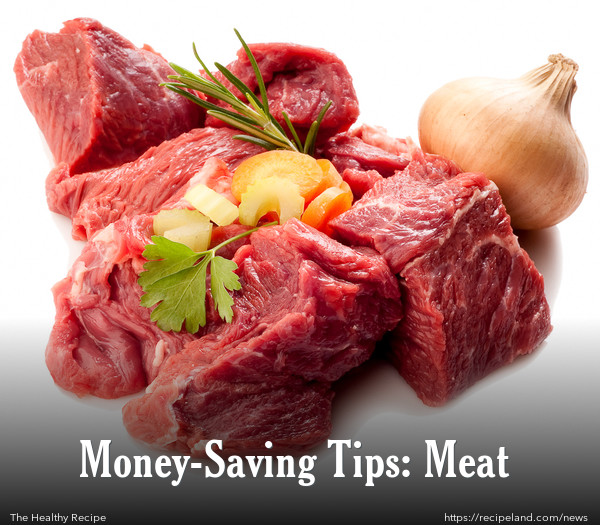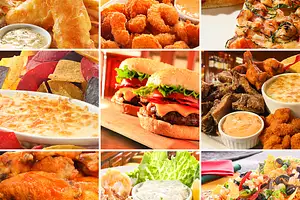If you eat meat, the odds are pretty high that it is one of the most expensive items on your grocery shopping list! We are all looking for ways to cut back and save money, so tackling the items we spend the most money on makes sense.
Keep reading to find out what cuts of meat are least expensive, how to be a smart shopper, and tips for preparing and storing your meat dishes that will save you money.
Which cuts to look for:
Beef: Buy chuck roast, arm roast, and brisket. These cuts are great for cooking “slow and low.” You can cook them on the stovetop in a dutch oven or braise them in your oven. If you don’t have an oven or want to spend less on your energy bill, these cuts are also excellent for the slow cooker.
Beef roasts and briskets can be used to make barbecue beef sandwiches, Sunday pot roast dinners, barbecue brisket, or shredded and used as taco or enchilada filling. You can also add cooked roast meat to stir fry recipes, stews, soups, and casseroles.
Chicken: Chicken is one of the meats we eat the most. Buy whole chickens and process them yourself or ask the butcher to section them for you.
If you want to purchase cuts of chicken, look for bone-in, skin-on breasts and thighs. Remove the bones and skin yourself to lighten your meal. This is especially easy if your recipe calls for poached chicken. Simply place poach breasts or thighs with the bones in and skin on in a pot with enough water to cover with 1 inch. Bring the water to a boil and then reduce it to a simmer. Season the water and chicken with salt, pepper, onion, and garlic. Simmer the chicken until it is cooked through. Depending on the size of the breasts or thighs, this could take 20-30 minutes. When they are cool enough to handle, remove the skin and take the meat off of the bones. Shred or chunk the meat and add it to your recipe.
Ground Meat: Look for meat that has the lowest percentage of fat. While, meat with a higher percentage of fat is less expensive, you will lose bulk as the fat melts away while you cook it. Ground meat is extremely versatile and can be used in a wide variety of dishes and cuisines, from juicy burgers to hearty lasagna.
Think about interchanging the ground meat in your recipes. Greek-style lamb burgers or chicken burgers with Asian slaw are a delicious take on this classic sandwich!
Use ground turkey instead of ground beef in your tacos or lasagna. The point is, be flexible and try to make the ground meat that is on sale work with your menu.
Bacon and Sausage: These meats can be relatively inexpensive and stretch your meals. Use a little bit of bacon or sausage to give your dish a meaty flavor. Fry up a few sausages or slices of bacon to round out your breakfast-for-dinner meals.
If sausage is on sale, think about taking it out of the casing and using it instead of ground meat. Ground sausage is delicious with pasta or when formed into burgers. Chorizo (Mexican-spiced sausage) can be used to fill tacos or enchiladas.
Pork: Buy shoulder or leg roasts of pork. Pork shoulder is a great candidate for slow cooker recipes, but it is also easy to braise in the oven or prepare in a dutch oven on the stovetop. Even though pork leg roast should be cooked at low temperatures to keep it moist and juicy, it does not take all day. Pork roast is often fully cooked in 60-90 minutes.
Pork can be used in a variety of cuisines, from Chinese to Southern Barbecue, because it has a neutral taste and takes on seasoning very well.
Fish and Seafood: Fish and seafood are often expensive because of their short shelf life. Shop the sales. Try to buy varieties of fish, like wild-caught mackerel and Alaskan wild salmon, as they are in season.
Look for good-quality, individually wrapped frozen fish filets in your grocer’s freezer section. Buy canned tuna and salmon that have been sealed in a pouch or packed in water.
Turkey: Purchase ground turkey, turkey breasts, or even whole turkey. Turkey meat is easily used in place of chicken in your favorite recipes. Buy an extra turkey or two after Thanksgiving when they are on sale. Prepare the meat and store it in your freezer. Use this meat throughout the next three to six months to give variety to your favorite recipes.
Shopping Strategies:
Buy in bulk: Watch your grocer’s sale flyers and buy meat when the family pack, or bulk package, is on sale. Divide the meat into meal-sized portions and wrap it in a layer of plastic wrap and then a layer of aluminum foil. Put it in a plastic storage bag and store it in the freezer.
Defrost the meat and prepare it in your favorite recipes.
You could also cook the meat and then freeze it in meal-sized portions, although this can make the meat dry.
Do not go crazy when you see a meat sale. Only buy what you will use in the next three to six months. Keep a list of the meat you have in the freezer to make sure nothing goes to waste.
Look for discounted meat: Learn which day of the week your grocery store discounts meat and shop on that day, if possible, for the best selection. Also, learn which meat is discounted each week. Some stores will discount ground meat one week and cuts for roasting the next. Often these discounted meats are sold frozen, so bring your freezer bags to keep them from thawing on the way home.
Buy remnants at the deli: Ask your grocer’s deli to sell you the leftover ends of the meat they keep in the deli case. These ends are often sold at a discounted price because they can be difficult to slice. You can slice it at home and make sandwiches or cut it into chunks for casseroles or stir fry dishes.
Talk to your butcher: Make friends with your butcher. Ask him for ways to use tougher cuts of meat. Your butcher can also tell you about the sale cycle in the meat department.
Use coupons: You can often find coupons for prepackaged meats like sausage, bacon, and deli meats online or in your local newspaper. Combine in-store sales with coupons and enjoy the savings!
Cooking and Storage Tips:
Make it go further: Add pasta, rice, or potatoes to your meat dishes to make them stretch. Rice, beans, or extra vegetables can be added to chili, soup, hamburger patties, or sloppy joes to double the recipe. Add small chunks of cooked potatoes, baked sweet potatoes, or beans to taco or enchilada filling to make more servings. Shred your leftover roasted meat and serve it over buttered pasta.
If meat is not on sale, buy the right amount: You only need 3 ounces of cooked meat per person, which is 4 ounces uncooked. Unless you faithfully use your leftovers, do not buy more than you will eat in one meal.
Roast tougher cuts of meat: Use a dutch oven, (either on the stovetop or in your oven), to slow roast the tougher cuts of meat you buy, like arm roasts or brisket. If you will be away from home, you can roast meat in a slow cooker.
Use up your leftovers: When you do have leftovers from larger cuts of meat, take them to work for lunch the next day or use them for another dinner. Serve pot roast one night, and then shred the leftovers and toss them with barbecue sauce to make filling for sandwiches.
Serve leftover taco filling on top of baked potatoes. Cube leftover pork and add it to an omelette or frittata. Add leftover fish to a soup or stew. If you only have a little bit of leftover meat, cut it into bite-sized pieces and put it on top of a green salad for lunch.
SOURCES: https://resourcefulcook.com/blog/12-money-saving-tips;
Image courtesy of Maggie Smith / FreeDigitalPhotos.net










Comments